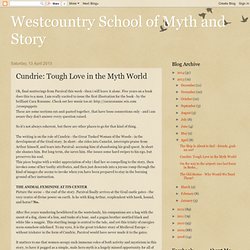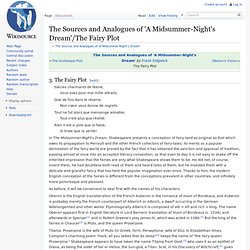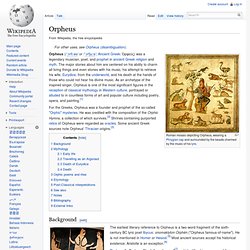

Is it the End of Courtship? Or the End of Unequal, Unhealthy, Unfulfilling Relationships? The bizarre plethora of articles that has been published lately regarding young, single “millennials” and our dating/sex lives is mind-boggling.

The Atlantic (not surprisingly) tops it out I think with recent pieces such as “A Million First Dates,” “Forget Online Dating: Here’s Something That Might Really Hurt Monogamy,” and “The High Price of Being Single in America.” Bloomberg presented us with “‘Intellectual Meat Market’ Makes Washington Long Odds for Single Women.” The Wall Street Journal recently published “Hacking the Hyperlinked Heart.” And of course, The New York Times just released “The End of Courtship,” an obituary to traditional dating and a cry for help for millennials who just don’t know how to navigate this new, tricky, casual, and tech-infused world of dating.
There has already been lots of criticism launched at The New York Times’ most recent attempts to use a few anecdotes as evidence of some sort of trend, and they’re spot on. Why has dating changed? Messy? Like this: Zelda Fitzgerald. Zelda Sayre Fitzgerald (July 24, 1900 – March 10, 1948), born Zelda Sayre in Montgomery, Alabama, was an American novelist and the wife of writer F.

Scott Fitzgerald. She was an icon of the 1920s—dubbed by her husband "the first American Flapper. " After the success of his first novel, This Side of Paradise (1920), the Fitzgeralds became celebrities. From early adolescence Zelda was a formidable presence in Southern society, outshining all other belles as the star in ballet recitals and elite country club events. Shortly after finishing high school, she met F. Back in America, Scott went to Hollywood where he tried screenwriting and began a relationship with the movie columnist Sheilah Graham. Biography[edit] Froggy Goes A-Courting, and A-Schooling, and A-Dining... So, you are a Napoleonic guard who loved to take countryside walks through the area of Estavayer-le-Lac in Fribourg Canton, Switzerland.

You noticed that there are lots and lots of frogs around. You decide to catch them and ponder what to do with them. Something sparks your creative streak, and you decide to gut them, and fill them up with sand, allowing you to manipulate them like beanbags. Now what? Well, how about using them in little dioramas? Cundrie: Tough Love in the Myth World. Ok, final mutterings from Parzival this week - then i will leave it alone.

Five years on a book does this to a man. I am really excited to issue the first illustration for the book - by the brilliant Cara Roxanne. Check out her music too at: These are some sections cut-and-pasted together, that have loose connections only - and i am aware they don't answer every question raised. So it's not always coherent, but there are other places to go for that kind of thing. The writing is on the role of Cundrie - the Great Tusked Woman of the Woods - in the development of the Grail story. English literature # Literatura inglesa. The literature in the XIX century is usually divided into two periods: Romanticism and the Victorian Time.

The Victorian Time takes place starts around 1832/1850 and ends in 1901 (with the death of Queen Victoria and the end of the Boer War). Relating to custom, the gentlemen were allowed to appear in public without wigs and ladies' dresses were allowed to outline the body. In architecture and furniture, there was simplicity of lines. The Sources and Analogues of 'A Midsummer-Night's Dream'/The Fairy Plot. Siècles charmants de féerie, Vous avez pour moi mille attraits, Que de fois dans le rêverie, Mon cœur vous donne de regrets.

Tout ne fut alors que mensonge aimable; Tout n'est plus que réalité; Rien n'est si jolie que la fable, Si triste que la verité! In The Midsummer-Night's Dream, Shakespeare presents a conception of fairy-land as original as that which owes its propagation to Perrault and the other French collectors of fairy-tales; its merits as a popular delineation of the fairy-world are proved by the fact that it has obtained the sanction and approval of tradition, passing almost at once into an accepted literary convention; so that even to-day it is not easy to shake off the inherited impression that the fairies are only what Shakespeare shows them to be. Orpheus. OrpheusFrom: Orpheus (Greek: Ορφεύς; pronounced (OHR-fee-uhs) or (OHR'-fews) in English) is a figure from Greek mythology, king of the Thracian tribe Cicones, called by Pindar "the father of songs".

Curiously his name does not occur in Homer or Hesiod, which is possibly due to political influence after the musician's death, but he was known by the time of Ibycus (c.530 BC) and he is mentioned by Plato. Orpheus. Roman mosaic depicting Orpheus, wearing a Phrygian cap and surrounded by the beasts charmed by the music of his lyre.

Orpheus (/ˈɔrfiːəs/ or /ˈɔrfjuːs/; Ancient Greek: Ὀρφεύς) was a legendary musician, poet, and prophet in ancient Greek religion and myth. The major stories about him are centered on his ability to charm all living things and even stones with his music, his attempt to retrieve his wife, Eurydice, from the underworld, and his death at the hands of those who could not hear his divine music. As an archetype of the inspired singer, Orpheus is one of the most significant figures in the reception of classical mythology in Western culture, portrayed or alluded to in countless forms of art and popular culture including poetry, opera, and painting.[1] Background[edit] The earliest literary reference to Orpheus is a two-word fragment of the sixth-century BC lyric poet Ibycus: onomaklyton Orphēn ("Orpheus famous-of-name").
Deities of the Religio Romana. Sibyl. The Sibyls were oracular women believed to possess prophetic powers in ancient Greece, The earliest Sibyls, ‘who admittedly are known only through legend,’[1] prophesied at certain holy sites, under the divine influence of a deity, originally—at Delphi and Pessinos—one of the chthonic deities.

Later in antiquity, a number of sibyls are attested in various writers, in Greece and Italy, but also in the Levant and Asia Minor. The English word Sibyl (/ˈsɪbəl/ or /ˈsɪbɪl/) comes — via the Old French Sibile and the Latin Sibylla — from the ancient Greek σίβυλλα (sibulla, plural σίβυλλαι sibullai),[2] Varro derived the name from theobule ("divine counsel"), but modern philologists mostly propose an Old Italic[3] or alternatively a Semitic etymology.[4] History[edit] The first known Greek writer to mention a sibyl is Heraclitus, in the 5th century BC: Number of Sibyls[edit] Persian Sibyl[edit] "brought up in Palestine named Sabbe, whose father was Berosus and her mother Erymanthe.
Libyan Sibyl[edit] Mythos37. Hazel. In Worship of Trees Written and Compiled by George Knowles Myths, Lore and the Celtic Tree Calendar / Birch / Rowan / Ash / Alder / Willow / Hawthorn / Oak / Holly / Hazel / Vine / Ivy / Reed / Elder.
